Imagine the thrill. A letter drops through a mail slot, the phone rings, or your email pings. The message contains a beautiful proposition. Atlanta’s High Museum will give you a not unsubstantial amount of money. In return, you agree to make photographs in the South. Otherwise, you can do whatever you want, knowing that your time, travel, and materials are paid for and that the High will acquire a set of prints from the work that you produce. In the art world, the “Picturing the South” commission is an uncommon arrangement, the kind that empowers the people who make art rather than those who show and buy and sell it.
This freedom was good for most of the sixteen artists who accepted the High’s offer. Many of them used the opportunity to experiment with new subjects, approaches, and forms as well as different cameras, film types, and processes. Sally Mann pivoted from portraits to landscapes and begin using ortho film in what became an intermediate step on the way to the wet collodion process so central to much of her later work. Sheila Pree Bright, known for her portraits and street photography, also shifted to landscapes. Dawoud Bey began working in a studio rather than on the streets. Alec Soth produced the first images of what would become his Broken Manual project, an exploration of the masculine fantasy of escape from society. Richard Misrach did his first sustained work outside the American West. Shane Lavalette made his first trip to the South.
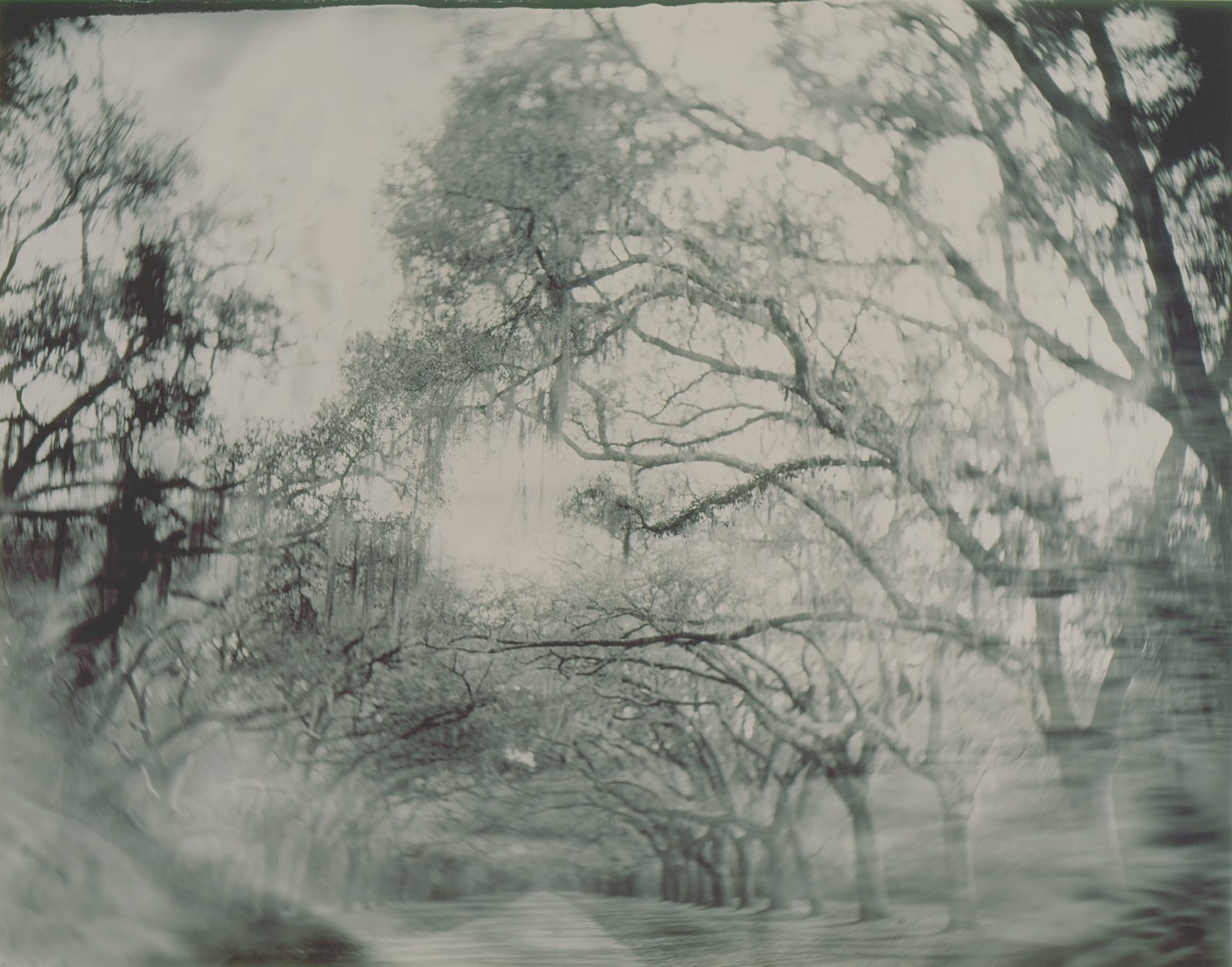
The first set of awards, made to showcase photography as Atlanta hosted the 1996 Olympics, asked Sally Mann, Dawoud Bey, and Alex Webb to work in Georgia. But for the most part, the museum left it up to the photographers to decide what counted as a picture of the South. As a result, whether the artists thought about them this way or not, their photographs offer an answer to the question of how to define the region. In “Picturing the South: 25 Years,” the High Museum displays this startling variety of Souths together for the first time.
Because the commission rather than curators structure the show, this exhibition begins with the artists and a genuine question. The High’s approach nurtures the indeterminacy and plurality that are art’s most essential qualities, the vast range of possible responses, the meanings that are not self-evident or fixed but always in motion as viewers’ circumstances, and the cultures, politics, and material conditions that ground them, change. “Picturing the South” resurrects a quality on short supply in today’s art world—surprise.
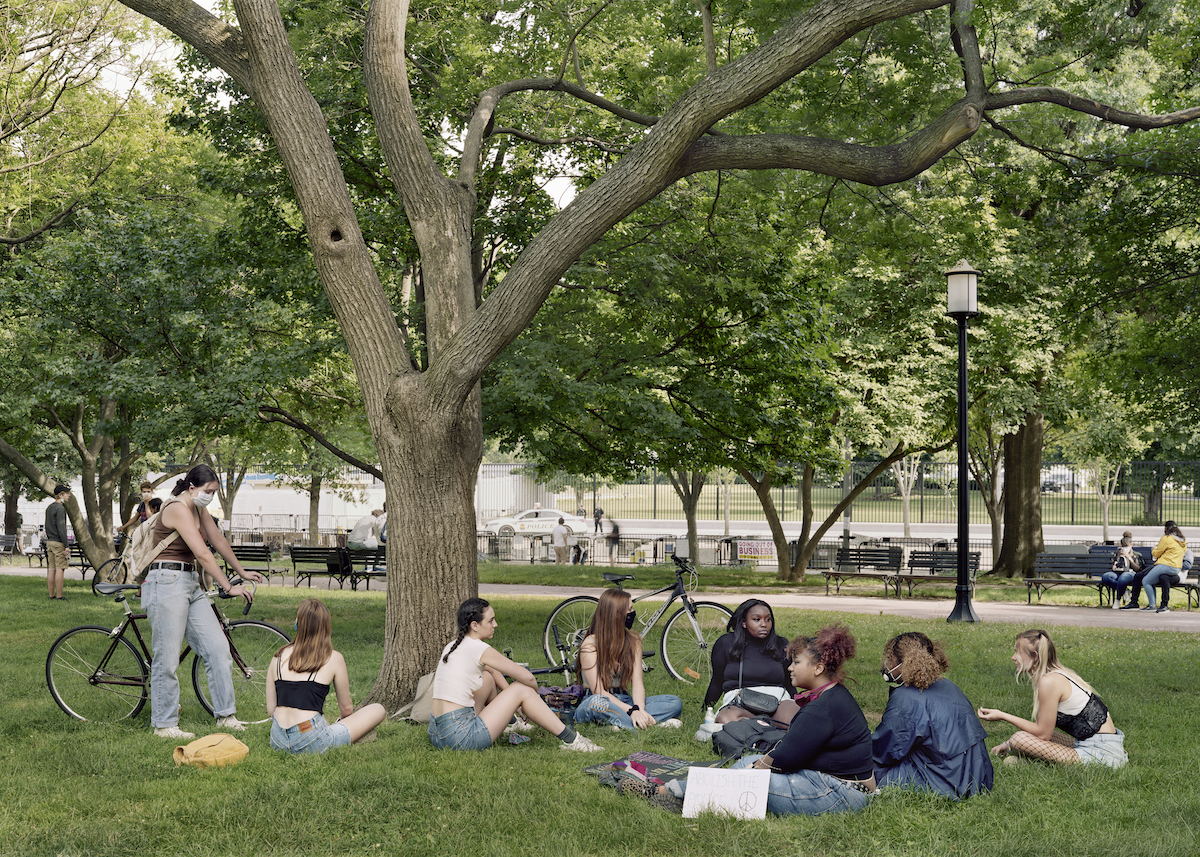
This feature is all the more astonishing because the region has been “pictured” so often across the history of photography. Most of the artists here react to this saturated visual history by seeking aspects of the South that have not been the focus of earlier photographers, what the High curators Gregory Harris and Maria L. Kelly describe as moving “beyond visual cliché and glib observations to create a new vernacular of Southern photography.” Alex Webb chooses the streets of neoliberal Atlanta, Mark Steinmetz the Atlanta airport, and An-My Le the landscape of Washington, D.C. Alex Harris makes images on the sets of independent film productions. Abelardo Morrell uses a camera obscura, mirrors, and empty frames to turn his photographs of the Atlanta area into “living collages” that manage to be both familiar and startling. Some artists engage with this legacy more directly, producing powerful images that comment not just on the subjects at hand but also on the entangled histories of the region and photography as a medium. Notable in this category is Jim Goldberg’s Whirlpool, White River, Augusta, Arkansas (2021), a dark and spooling collage made out of the artist’s cut-up black and white images and the residents’ cut-up words that alternately meanders and floods along a low shelf like the waterway it documents.
Like the South itself, the High’s exhibition is visually rich and sprawling. Visitors have the rare chance to see multiple pictures by each artist. Go prepared to spend several hours. Interesting photographs do not always give up their meanings easily. Art, as the writer and critic Maggie Nelson reminds us, rewards “the slow work of looking.” Here are a few of the artists that made me linger. The fact that many of you will make different choices is exactly why this show is rewarding (and art is important).
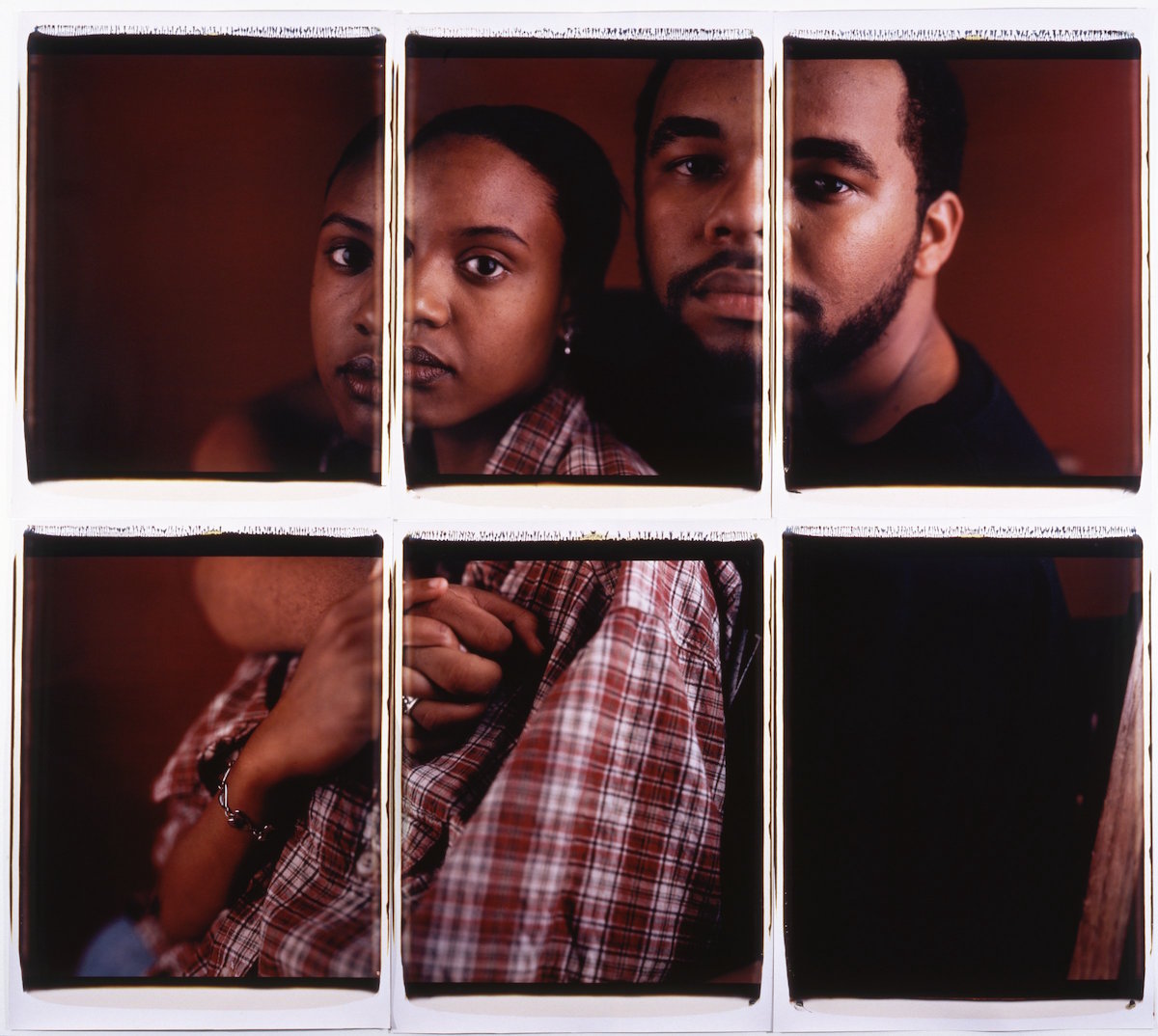
Dawoud Bey takes a direct approach to the weight of southern history. “The South is the place where the formative relationship between African Americans and this country begins,” he has said. “The tension between the violent history and the beautiful landscape” are present from start. “It’s a really beautiful place where at one time there was very little that could be called beautiful about it.” One of the first artists to receive the commission, Bey used the opportunity to explore how he might reconfigure some of that weight and beauty and violence by creating photographic portraits of Black people that convey the kind of exalted presence of Rembrandt’s painted portraits. He worked to bring young people into his practice for the first time, both as subjects and as viewers of art, “to demystify the way the artist works by making them a part of the process.” Bey also experimented with a new camera, a 250-pound, 20 x 24-inch Polaroid. In order to easily enlist interested students as collaborators, he set up a makeshift studio for two weeks in a high school in East Point, Georgia, a suburb immediately southwest of Atlanta.
The result—huge grids of framed fragments that come together to form closely cropped portraits—have to be seen in person to be truly appreciated. Bey has said that he created these collaged portraits because no single image can ever capture a person’s depth and complexity, and he wanted to challenge stereotypical ideas about Black teenagers. But Bey’s formal choices—the fracturing and intentional misalignment of the parts—highlight how young people that age are works in progress. Against warm red backgrounds, these high school students pulse with life. They try on pieces of selves to check the fit. They get to be kids experimenting with being adults, a stage of life too many Black children are denied. In Bey’s images, these Black teens have time. They have a present and also a future.
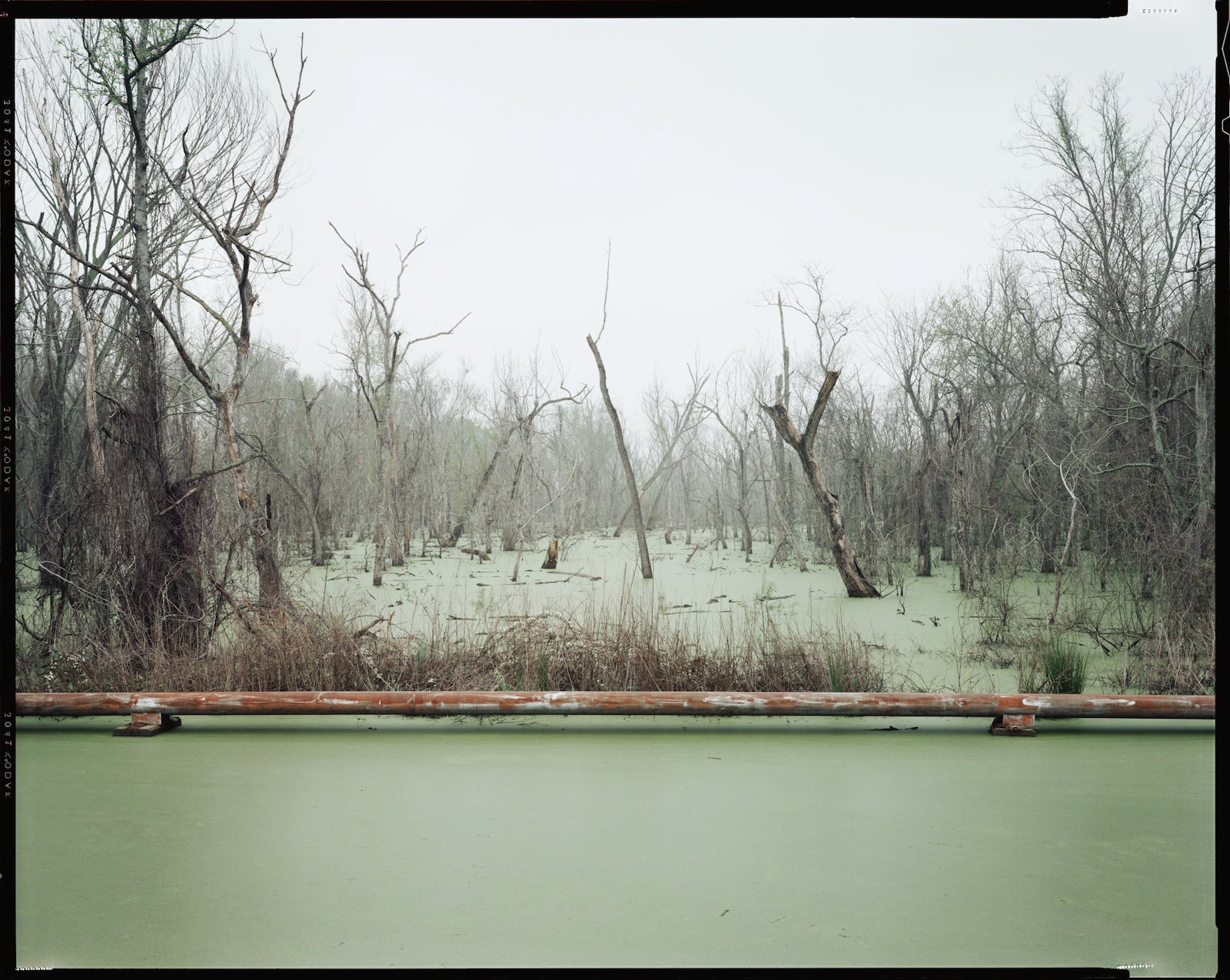
There’s a reason this show opens with Richard Misrach’s huge photograph Hazardous Waste Containment Site, Dow Chemical Corporation, Mississippi River, Plaquemine (1998). The ghostly trees on either side of a chain-link gate here gesture at an image central to the old plantation romance: live oaks whose spreading limbs drip skeins of moss. Those haunted trees appear in this show too, creating a canopy over the entrance to a former Georgia plantation in Sally Mann’s Untitled (1996) and hanging over a row of identical wood frame houses with deep porches in Misrach’s own Restored Slave Cabins, Evergreen Plantation, Edgard, Louisiana (1998). But the trees in the exhibition’s first photograph stand as witnesses to a more recent horror, the petrochemical industry’s ravaging of the land and water along a 150-mile stretch of the Mississippi River between Baton Rouge and New Orleans. Formal symmetry—trunks leaning in on either side, the gate in the middle, and a gray sky between the branches indistinguishable from the gray water between the reflected limbs—creates an achingly beautiful image of an ongoing crime. The large scale of the photograph and its sharp focus invite you to walk into the frame, even as the subject matter—How deep is that water? What kind of waste is being “contained”?—pushes you away. But it’s too late to escape. The trick of light on glass means your reflection is already there, standing in that polluted pond.
Misrach’s work on the place its inhabitants call “Cancer Alley” began with a 1998 commission and continued in 2010 when the High sent him back again. Around one hundred petrochemical plants there flush, spew, and drip contaminants into the air, water, and ground where people live and work and play. The scale of the photographs matches the scale of the disaster. You have to look closely at an almost too pretty cloud over a scrubby pasture lined on either side by trees to see the massive Shell oil refinery, tiny here, a toy-like tangle of smokestacks, burning flairs, and tanks at the photograph’s vanishing point. The wall text adds to the shock. What looks like natural cumulus is actually a byproduct of the oil refining process produced when damp air meets volatile hydrocarbons. In another image, a rusty pipe draws a perfect horizontal line across a chemical green swamp, setting off a bottom third of open “water”—something decidedly unnatural is creating that hue and that viscosity—from the trunks of dead and dying trees above.
Like Bey, Misrach sees the South as a region of beauty and violence. His first set of photographs of environmental catastrophe along Cancer Alley offer a stunning indictment of how political institutions have failed to protect our most important waterway and the mostly Black and Indigenous citizens who live along its southern banks. Yet when the artist returned over a decade later, he found that little had changed. This realization led Misrach to collaborate with scholars, including landscape architect Kate Orff, to create a multi-layered, interdisciplinary investigation of Cancer Alley and the way the petrochemical industry has permeated every facet of human life. Seeing Misrach’s 1998 and 2010 images together pushes viewers to follow the artist into a paradoxical confrontation with the limits of art as a form of repair.
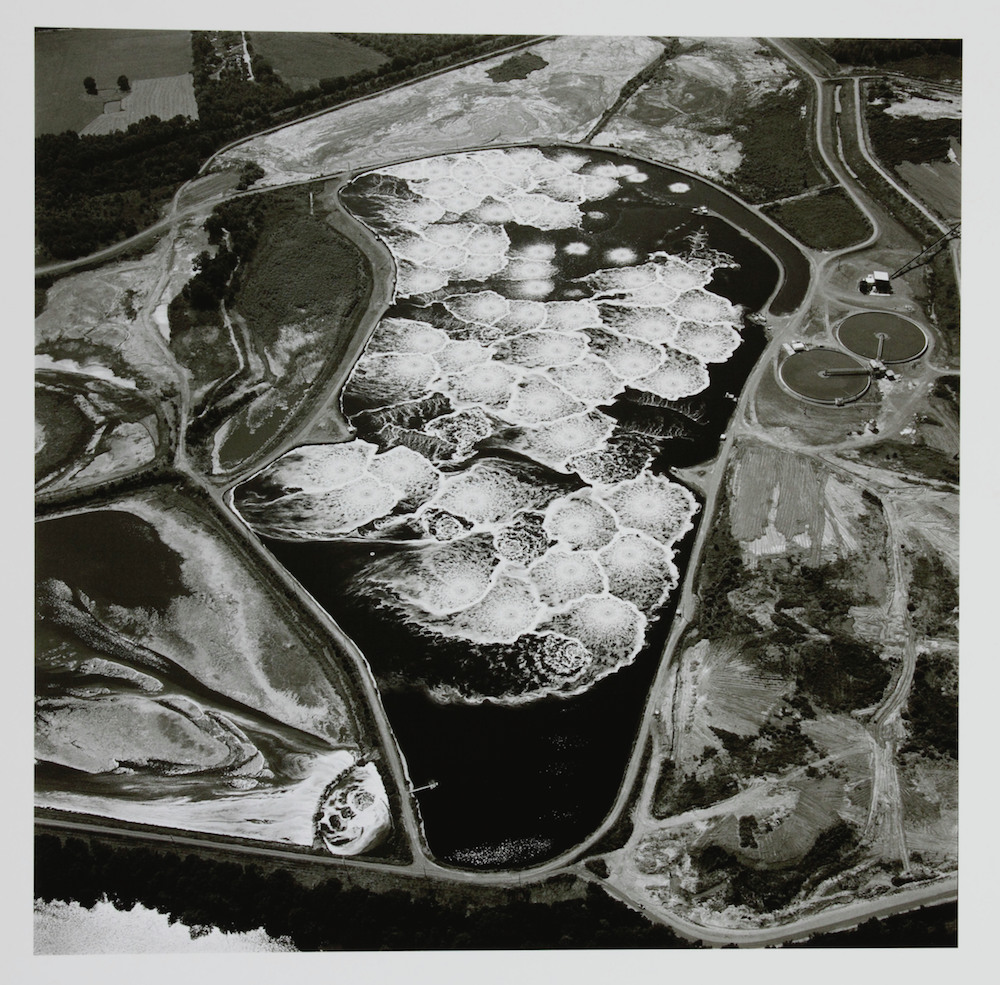
Formally quite different, Emmet Gowin’s photographs of paper mills are also beautiful images of ongoing environmental destruction. Virginia-born Gowin had been experimenting with aerial photography for about twenty years when he received a “Picturing the South” commission in 2001. That work had taken him out West and to other countries, but the High’s offer made him change his mind. For all the time he had spent making photographs from the air, he had made this work outside his native region. He decided to use the commission to look for the traces history had left on the southern landscape.
Looking down at the land, Gowin discovered row after row of pines had replaced cotton fields and rice patties. Plantations had turned into tree farms. Clustered along southern coasts and waterways, giant mills turned all this pine pulp into paper. Sometimes, in places like coastal Georgia and South Carolina, these plants even located the aeration ponds of their water treatment facilities inside the banks and ditches of Colonial-era rice paddies. In this shallow water, motors churned industrial runoff into a froth and sprayed it into the air. Sunlight then burned away some of the toxins, like dioxin, a byproduct of paper production. But Gowin could also see that toxins remained after the plants released this processed waste back into nearby rivers. Discolored bands of water and desiccated banks made visible the acidic currents flowing through the waterways.
From above, this dirty process took on a sublime and abstract beauty. At the High, twelve black and white square photographs of these ponds form a giant, mesmerizing grid. In some images, the motors surrounded by their imperfect circles of white foam look like clusters of amoebas. In other photographs, they look like misshapen lace doilies or the images children make when they use a spirograph toy. Looking at these images, we can see layers of damage and harm that would otherwise remain mostly invisible, pollutants only partially contained by dikes enslaved laborers died building.
Farther into this huge show, Debbie Fleming Caffery and Kael Alford’s photographs hover in the now seemingly old-fashioned space where the documentary impulse and art meet. Both artists use their commissions to complete ongoing projects that require them to return to small Deep South communities. For Caffery, this place is a series of small and dying towns in northern Louisiana and western Mississippi. For Alford, it is several tiny coastal settlements where land and water mix about two hours south of New Orleans. Both artists take up the challenge of portraying places that people different from themselves call home. To make this work, these artists have to get to know these communities. They have to build relationships.
Caffery, a white Louisiana native, has spent a long career examining small town life on both sides of the lower Mississippi River. She used her 2015 commission to complete a body of work she began in 1988. At a time when many Americans who do not live in declining rural areas seem unable to imagine or care about the lives of those who do, her deeply empathetic portraits and landscapes deserve to be more widely seen.
Nothing in this exhibition moved me more than Caffery’s enigmatic almost-portrait Charlie Horse Arm (2017). In a crisply perfect, and smallish, in the context of this show, silver print, a Black man presses his deeply veined arm into a fist in a seat. The knuckles are swollen, suggesting arthritis and hard use. The vinyl on the rectangular back and rounded bottom of the mid-century metal chair, part of a set that probably originally came with a matching Formica-topped table, has its own branching, vein-like design. The mostly horizontal pattern on the seat bottom and the mostly diagonal pattern on the seat back make the mostly vertical veins in the cramping arm appear like they have escaped the two-dimensional surface entirely and popped out of the frame. Cafferty’s picture Leo (2011) offers another unconventional portrait, the back of the head of a Black man holding what may be a fishing pole or a long limb used to push a boat. Tree branches here do the work that those doubled patterns did in the other image. The contrast between the rumpled and partially upturned collar and, under a fedora, a perfectly neat triangle of salt and pepper hair conjured a thick web of family: a wife or a daughter or granddaughter who knows how to wield scissors, grands and great-grands trying to get Leo’s attention by pulling at his shirt. Formally, these two Caffery photographs are the opposite of Bey’s portraits, with one part standing for an entire person rather than a collection of fragments making a whole. But these images, too, create a heightened presence while also making it clear that one image alone is always a partial view.
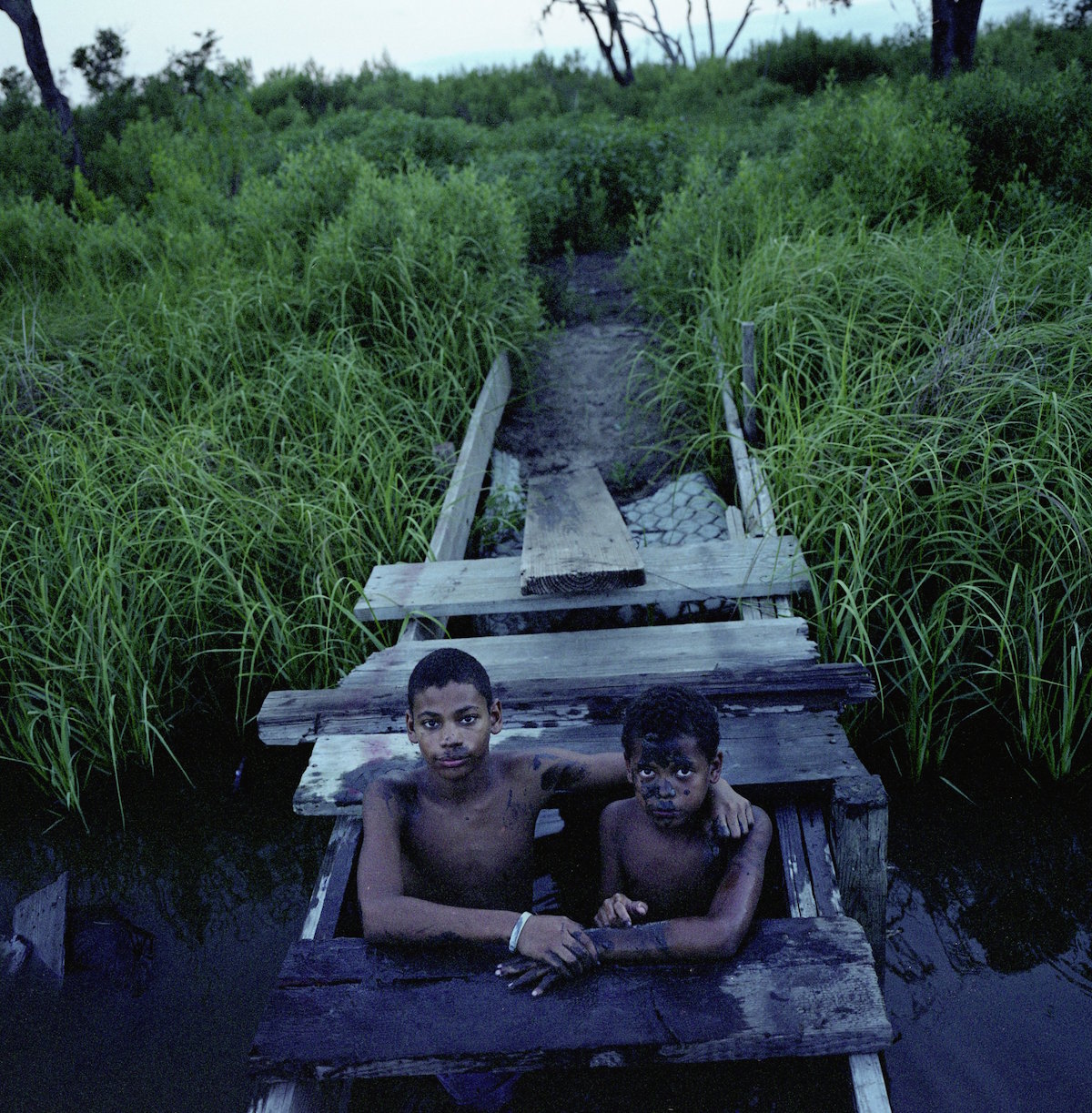
You may be tired by the time you get to Kael Alford’s pictures, part of a body of work she published as a book called Bottom of da Boot. Take a break and sip a hot drink in the café, and then come back. The best of Alford’s photographs grow more rewarding the more time you spend looking at them, and the whole—all the images together—creates an effect stronger than even the best of the individual prints.
Before this project, Alford mainly worked as a war photographer, a job that required a talent for capturing emblematic scenes and gestures on the fly. When a magazine sent her to cover the aftermath of Katrina in 2005, she had a chance to visit a place she had never been, the Indigenous communities nestled in the coastal marshlands on the southern tip of Louisiana where her grandmother had been born and, as she discovered in the course of her work, some relatives still lived. The High’s commission, which Alford received in 2007, gave her the resources to slow down and experiment with a medium-format camera and to return regularly to this Louisiana coastal area. She began to concentrate on two Francophone settlements struggling with rising seas, Isle de Jean Charles and Pointe-aux-Chenes.
In Live Oak Drowned by Salt Water, Pointe-aux-Chenes, Louisiana (2010), medium gray limbs splay out of a darker gray trunk in the center of a light gray sky. Alford’s haunted southern tree is dead. Water is everywhere here, the defining characteristic of these communities, the source of the fish and shrimp that are many people’s livelihoods, as well as the storms that destroy their houses and roads. But residents have lived with the ocean’s contradictions for generations. What is new is the way the land itself is quickly disappearing, turning into marsh and then open water under the impact of both climate change and large-scale engineering projects elsewhere. In The Dardars’ Swimming Pool, Pointe-aux-Chenes, Louisiana (2010), a striking rectangle of turquoise juts out toward the brown of a bayou. Water here is beauty and pleasure, a father and son on a float, two kids playing, and a man leaving the wood siding of the pool deck in what looks more like a crouch than a dive. But it is also a threat. In the background behind all this fun, a camper sits beside a storm-damaged house striped with repairs, painted and unpainted boards forming a patchwork beneath a rusty roof full of gaps where whole sheets of tin have blown away.
In work that owes a debt to Robert Frank, and through him, to Walker Evans, Alford makes smart photographs of photographs, other kinds of images, and signs. Images of a young man with the tattoo that gives this collection its name and a sign that spells out “Indian Land” in large turquoise print and then, in smaller, black-stenciled letters on a turquoise background, “Keep Out,” set the scene. In Pastors Above the Flood Line, Live Oak Baptist Church, Pointe-aux-Chenes, Louisiana (2008), thirteen widely varying photographic portraits of white men hang on a brown paneled wall above a line formed by water-damaged wood veneer and the dried debris that also covers the off-white vinyl floor. In Christ Walking on the Water at Doris and Tillman Naquin’s House, Isle de Jean Charles, Louisiana (2010), a framed print of a Black Jesus surrounded by clouds streaked with rainbow light and standing on water the color of the Dardars’ pool sits above an organ whose music stand serves as an easel for framed photographs of family members of every hue. The Bottom of da Boot provides an intimate portrait of deeply rooted people who will need a miracle to hang on to the fragile place they call home.
Life, human and otherwise, is both resilient and profoundly vulnerable, and no single one of us ever has more than a partial view. At its best, photography welds particularity and form in service of these kinds of contradictory truths. The generous terms of the “Picturing the South” exhibit provide multiple lenses on just this complexity, urging a generosity of perspective in turn.
This essay is part of our Shutter art and photography series. “Picturing the South” is on view at the High Museum in Atlanta through February 6, 2022.
Grace Elizabeth Hale is Commonwealth Professor of American Studies and History at the University of Virginia and a 2018–2019 Carnegie Fellow. She is the author, most recently, of Cool Town: How Athens, Georgia Launched Alternative Music and Changed American Culture (2020). She has written for the New York Times, the Washington Post, Slate, American Scholar, and Southern Cultures. Her new book, forthcoming in 2022 from Houghton Mifflin Harcourt, is The Lyncher in the Family, is a history of her grandfather, a Mississippi sheriff, and white Americans’ inability to reckon with the history of white supremacy.
Header image: Alec Soth (American, born 1969), Sidney’s Tomatoes, Nubbin Creek, Alabama, 2007, pigmented inkjet print, High Museum of Art, Atlanta, commissioned with funds from Photo Forum and the Friends of Photography, 2009.22. © Alec Soth.

